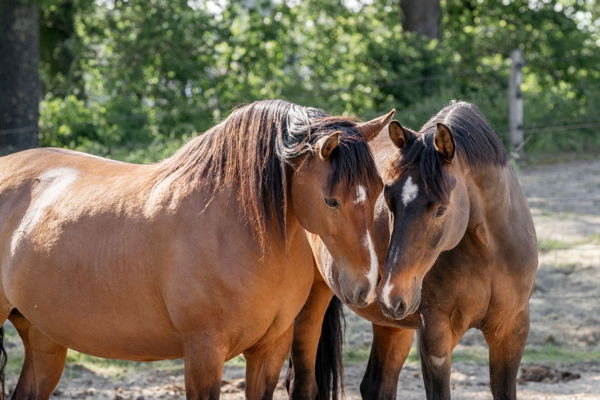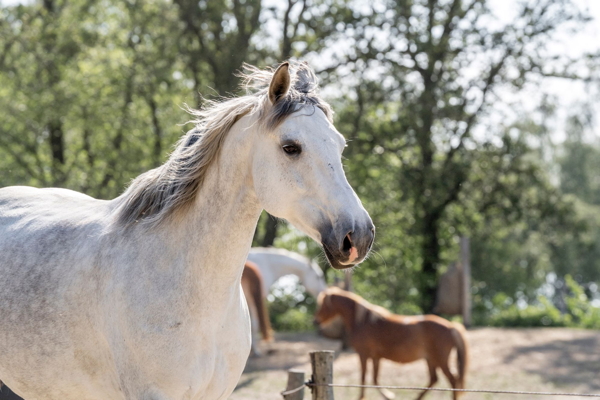 |
RacingBetter News |
| Thursday 6th July 2023 | |
Decoding Equine Language: 4 Tips To Understand Horse Behaviour
Horses, one of nature's most captivating creatures, speak a language all their own. From the flick of a tail to the angle of their ears, every movement carries meaning. As an equestrian enthusiast or horse owner, learning to decode this language is crucial for building a harmonious relationship with your equine companion.
This guide is packed with practical tips to help you decipher the subtleties of horse behaviour, taking you a step closer to understanding these magnificent creatures at a deeper level.

1. Observe Equine Body Language
Understanding horse body language involves careful attention to various physical cues. These cues can tell you much about what a horse is feeling and thinking, providing valuable insights into their behaviour. However, be aware of stereotypic behaviors, as they can indicate stress or discomfort in horses.
- Ear Positions: Ears play an essential role in equine communication. When a horse's ears are pricked forward, this indicates interest or attention. Ears laid back flat against the head could signal aggression, fear or discomfort, while sideways or relaxed ears typically denote calmness and contentment.
- Eye Expressions: Eyes can also reveal a lot. Wide, white-rimmed eyes often signify fear or surprise. Half-closed or soft eyes usually show contentment and relaxation.
- Mouth And Nostril Movements: A horse chomping or grinding its teeth usually means stress or discomfort. Flared nostrils, except during physical exertion, could signal excitement or anxiety.
- Tail Positions: As with ears, tail positions can convey a multitude of messages. A raised tail might show excitement or alertness, while a tail clamped tightly against the body can suggest fear or submission. A relaxed tail usually shows a content and calm horse.
- Skin Twitches: Subtle skin twitches could be a reaction to flies, but if you notice frequent, intense twitching, it could indicate irritation or unease.
Observing these elements can enhance your understanding of your horse's state of mind and aid you in appropriately responding to their needs, promoting a harmonious relationship.

2. Recognise Vocal Expressions
In addition to the body language of a well-groomed horse, vocal expressions also play a significant role in equine communication. Horses use a range of vocal expressions to communicate, which may vary depending on the situation:
- Neighing Or Whinnying: This is a high-pitched and relatively long sound that a horse makes. It's often a signal of excitement or a call to other horses. For instance, a horse may neigh when it spots a familiar equine friend after a period of separation.
- Nicker: A softer, lower-pitched sound compared to a neigh. Horses typically make this sound as a greeting or a sign of affection, especially during feeding times or when anticipating care and attention from their human companions.
- Snorting: You'll hear this sound when a horse forcefully exhales through the nose. Horses snort to clear their airways, but it can also express a range of emotions, from relaxation and contentment to alertness and fear. If a horse snorts while its ears are pricked and its body tense, it could indicate the presence of a potential threat.
- Squealing: It's a high-pitched and often loud sound. Horses usually squeal in situations of conflict or during aggressive interactions, such as establishing hierarchy within a herd or during mating attempts.
- Blowing: This sound is similar to snorting but without the vibrating element. Horses blow to investigate something unfamiliar in their environment or as an alert to potential danger.
These vocal expressions serve as an additional layer to their silent body language, giving you a complete picture of their emotional state. Understanding the specific contexts in which these sounds are made will enhance your overall comprehension of your horse's behaviour.
- Understand The Herd Mentality
By nature, horses are social animals. They have evolved as herd animals with an innate propensity to form groups. This behaviour, known as the 'herd mentality', is embedded deep within their survival instinct. Therefore, to fully comprehend horse behaviour, you must delve into their social structure and observe how it influences their individual and collective actions.
- Hierarchical Social Structure
Horses typically organise themselves into a hierarchy, but it's not always led by a single dominant horse; sometimes, it's a dominant mare and stallion pair. This leading individual is usually responsible for making decisions that impact the entire herd, such as when to move to a new grazing spot. Understanding this dynamic can provide insights into behaviours like deference or aggression between horses.
- Buddy System
Within the herd, horses often form close-knit relationships or 'buddy' pairs. These horses tend to stay close together, offer mutual grooming, and show signs of distress when separated. By observing these bonds, you can better understand your horse's preferences and social tendencies.
- Separation Anxiety
Being herd animals, horses often show signs of anxiety or stress when isolated or separated from their herd. This behaviour may manifest as pacing, neighing, sweating, or demonstrating other signs of unease. Recognising these behaviours can assist you in managing your horse's stress levels, especially during times of necessary separation.
- Territorial Behaviour
Although horses are not typically territorial creatures, when resources such as food and water are limited, they might display territorial behaviour. This can include behaviours like pinning their ears back, showing their teeth, or even biting and kicking. Recognising these signals can help prevent incidents before they occur, ensuring safety for all involved.
The herd mentality is a significant factor that shapes a horse's behaviour. By understanding it, you can create an environment that caters to your horse's social needs, making them feel secure and comfortable.
4. Look Out For Signs Of Stress Or Illness
Lastly, it's critical to be vigilant for signs of stress or illness in your horse. Just as vital as understanding normal behaviour is recognising signs of stress, discomfort, or disease in horses.
Changes in eating or sleeping patterns, reluctance to move, unexplained weight loss, and unusual aggression can be potential warning signs. For example, if a typically energetic horse suddenly appears lethargic or uninterested in its surroundings, it may be unwell.
Regular health checks and prompt attention to these signs can help maintain your horse's well-being and longevity. Remember, if you notice any unusual behaviour, it's always best to consult a veterinarian to prevent further complications and ensure a healthy horse.
Conclusion
Decoding equine language is a process that requires time, observation, and patience. Each interaction offers a chance to learn more about these majestic creatures, deepening our connection with them. So, next time you're with your horse, observe attentively, and unravel the secret language of equine behaviour; it's a journey worth embarking upon.







